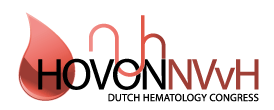Finding and validating new targets for immunotherapy against malignant progenitor T cells
T lymphoblastic leukemia/lymphoma (T-LBLL) is a malignancy arising from progenitor T-cells, exhibiting a heterogeneous phenotype. Although advancements in chemotherapy regimens have significantly improved overall survival rates, approximately 20% of pediatric and 50% of adult T-LBLL patients still experience relapse or fail to respond to therapy. Given that further intensification of chemotherapy is limited by the risk of high therapy-related mortality, recent research has shifted focus toward developing immunotherapies to effectively treat T-LBLL.
Current immunotherapy strategies for T-LBLL have largely centered on CAR T-cell therapies, following the success of CD19-targeting CAR T-cells in B-cell malignancies. Clinical trials for T-LBLL primarily target pan-T cell markers such as CD5 and CD7. While these approaches are promising, they also eliminate healthy T-cells, increasing the risk of life-threatening infections and necessitating subsequent allogeneic stem cell transplantation. Another promising target is CD1a, a marker specific to progenitor T-cells, but it is present in only around 40% of T-LBLL cases, leaving a significant portion of patients without targeted therapy options. To address this gap, we employed a glycan labeling-based shotgun proteomics approach to comprehensively characterize surface antigens of malignant and healthy progenitor T-cells. This analysis enabled the identification of novel targets enriched on T-LBLL cells from 10 cell lines, 3 PDX cell lines, and 5 patients. We applied a standardized protocol for developing CAR T-cells and evaluated the in vitro cytotoxic potential of these targets against T-LBLL.
Our proteomic analysis of this small cohort revealed 37 new potential surface antigens for immunotherapy against T-LBLL, with low or absent expression in healthy T-cells and non-thymus tissues. These markers were validated for expression on a larger patient population using diagnostic transcriptomic datasets from our center. Preliminary experiments demonstrate that targeting these new markers with CAR T-cells can elicit a potent cytotoxic response. In vitro, this new CAR T-cell showed similar killing efficacy to that observed in CD1a-targeting CAR therapies.
This study validates glycan labeling-based surface proteomics as a promising method to identify new immunotherapeutic targets. Using this method, we identified 37 new markers as promising immunotherapy targets for T-LBLL, offering a potential treatment option for a broader range of patients compared to CD1a-targeting therapies. Further clinical evaluation is warranted to validate these findings and assess the safety and efficacy of CAR T-cells targeting these new markers.

